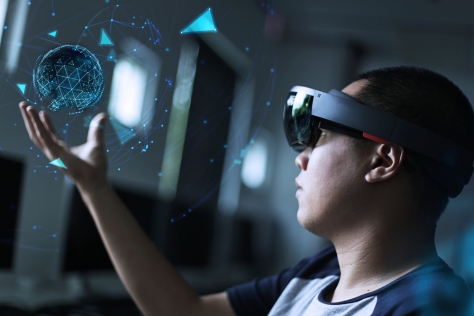According to IDC, the estimated market opportunity of Augmented Reality and Virtual Reality (AR/VR) solutions by 2020 will be $143 billion. Companies of all sizes are increasingly using AR and VR for corporate training and to acclimatize their new employees to the work environment.
In fact, according to STRIVR, learning retention rates with AR/VR can be as high as 75 percent as compared to just 10 percent retention rate through reading or lecture. Whether its management, customer services, or seasonal situations, businesses are successfully using AR and VR for numerous purposes.
For your company, that means if you are still not incorporating AR and VR in corporate training, then you are missing out on a lot. Here are some of the ways you can take advantage of AR and VR for training your employees.
1- VR workplace tours for new employees
With a virtual tour of the workplace, your new employees can familiarise with their new work environment, even before actually coming to the office. For you, it means your employees will be ready to get started with their work right from the first day since their learning curve will reduce greatly.
They would already know the breakrooms, bulletin boards, their team leader’s office, and their own cubicle when they arrive. You could also design the entire onboarding training module for new employees as a VR tour to make it more engaging and interactive.
2- Emergency drills
Emergency drills are a necessity for every company, and they have to make sure those drills are being conducted from time to time. But just getting a safety expert to explain the different scenarios to your employees is not enough. Most people find emergency drills boring as it interrupts their work, and they often don’t even pay attention to it.
However, you can create emergency drills using AR/VR technologies to check if the employees can handle stress and identify the correct security protocols through simulations. The biggest advantage of this is that employees can take these courses according to their own time.

3- Task walkthroughs
To help your employees get a better understanding of the tasks that they need to perform on a daily basis, you can create online training simulations which would allow them to learn in a virtual environment.
With these simulations, they can determine the skills and steps they need to follow to complete a task, and it would also give them the opportunity to learn from their mistakes without any consequences.
Bear in mind, it’s important to make sure that the simulations are as realistic as possible to provide your employees with a fully immersive experience that they can implement in the real world.
4- Compliance training
For companies, compliance training is one of the most important and mandatory processes, and they have to make sure their employees are well accustomed to it. But handing out a large document to every employee and hoping that they would read every line of it is not enough and it may not even help your organisation in the long run.
Instead, you can use AR/VR to create virtual workplace environments where employees can get a better idea about the compliances they need to adhere to through online simulations. You can also create game-based lessons where employees are given different situations to see how they would respond to it, whether its accepting gifts from a client or a workplace injury.
5 – Virtual case studies
There is no better way to understand the business and skills, than by going through previous case studies which had successful results. But most case studies are text-based and they aren’t as engaging. With AR/VR technology, your employees can understand these case studies in a more interactive way, as they will be able to see those examples in action.
By adding simulations, activities, and fun quizzes, the otherwise boring case studies become more life-like and allow your employees to retain more knowledge.
Getting the most out of AR/VR training
By implementing VR and AR technologies, you are also able to measure the performance of your employees accurately. Heat maps make it possible to see exactly where users look during their 360-degree experience and the instructors can monitor trainees in real-time. You can create VR/AR applications that can be easily integrated with your Learning Management Systems (LMS) as well.
In conclusion
Augmented and virtual reality training provides an innovative and new way to increase employee engagement, improve productivity, and save costs while offering a cutting-edge learning experience. With the latest advancements that have happened in the AR and VR technologies, the barriers are quickly fading away making it a viable option for immersive training for any industry.


It’s hard to come by educated people in this particular subject, however, you sound like you know what you’re talking about! Thanks
LikeLike
Usually I do not read post on blogs, however I wish to say that this write-up very pressured me to try and do so! Your writing style has been surprised me. Thank you, very nice post.|
LikeLike